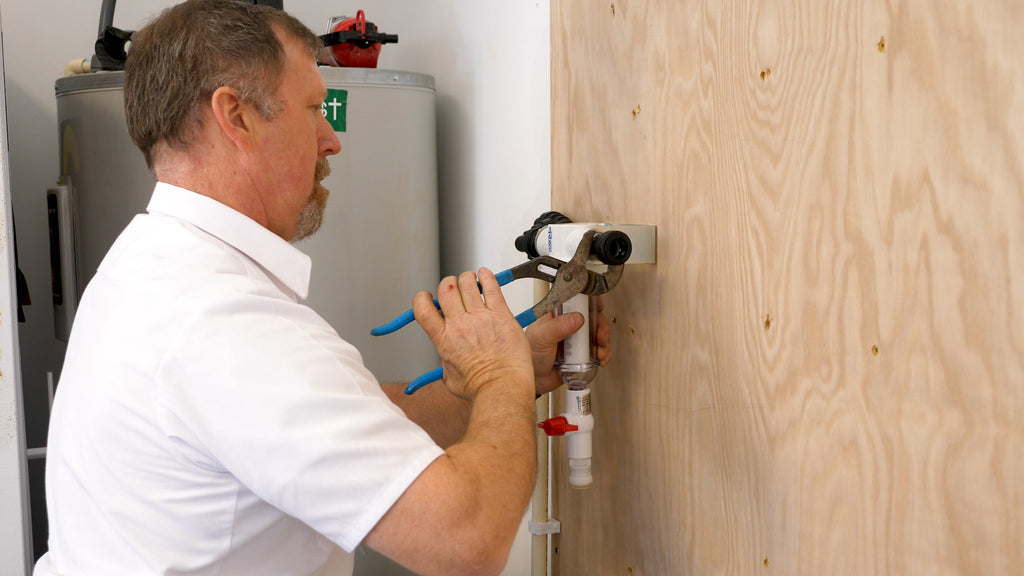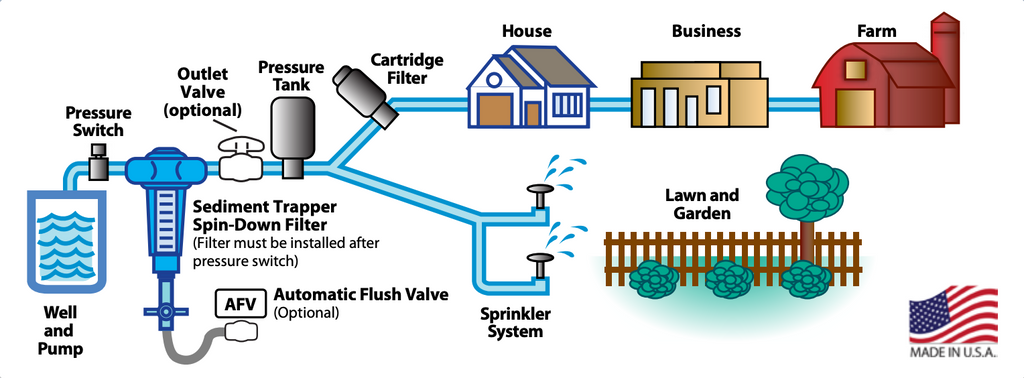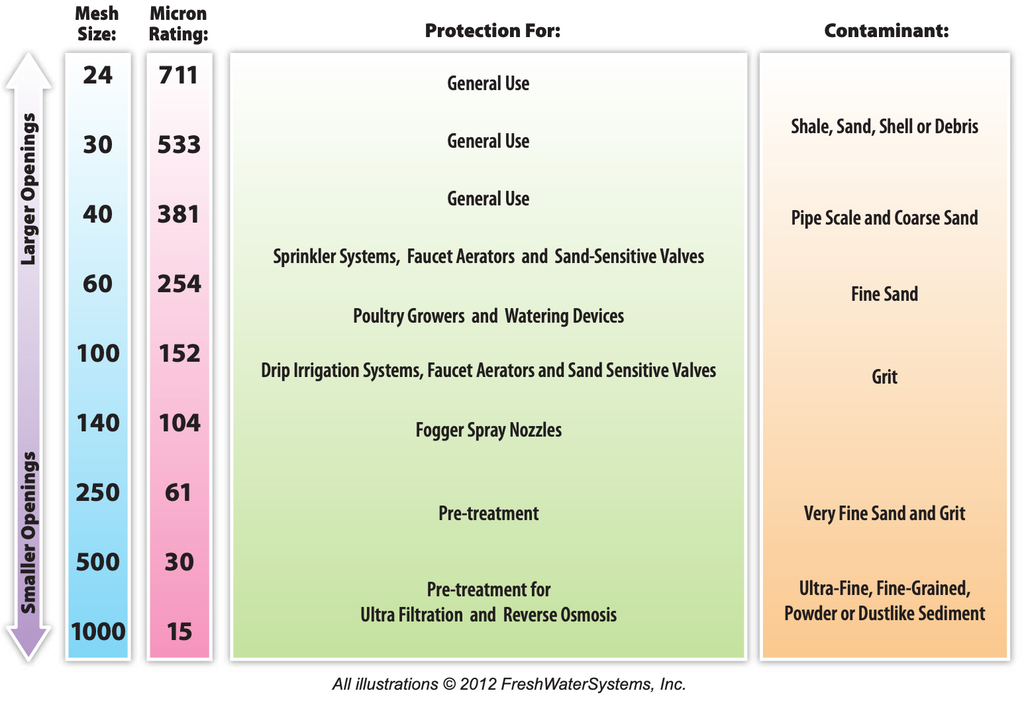A spin-down filter or sediment trap captures dirt, debris, and sand from water. A spin-down filter or sediment trapper removes large particles from water before it enters your other treatment systems and equipment. In this article, you can discover how spin-down filters work and how to install and clean your sediment filter.
What is a spin-down filter?
A spin-down filter is made to capture large particulates like sand or rust chunks from a decomposing well. Unlike a fine micron sediment filter, a spin-down filter is designed to do the heavy lifting of trapping large chunks of debris and sand.

Water flows into the top of a spin-down filter and spins in a centrifugal motion. The design of the head diverts water into the chamber in a fashion that circulates the water through the filter housing. With centrifugal force, the dirt and debris are pushed to the outside of the clear housing and allowed to settle in the bottom. You periodically open the valve to release all the trapped dirt and debris from the housing.
What is a sediment trap?
The concept of the head and housing of sediment traps and spin-down filters are identical. The sediment trap varies from the spin-down in that it has more capacity for accumulating debris. You'd want to use a sediment trapper when you have a lot of debris and want to avoid opening the valve to release the dirt as frequently. Both the filter and stem of the sediment trap fit into the housing, allowing more dirt and debris to accumulate in the bottom. The filter in a spin-down covers the entire housing.
Spin-down filters vs sediment traps
Both spin-down filters and sediment traps are designed to eliminate sediment from water as it flows through. The primary difference between the two types of filters is the amount of sediment they can hold at a time. A sediment trap’s design allows it to hold more sediment between the filter and the cover than a spin-down filter. This means that homes with a large amount of sediment in their water should opt for a sediment trap, while spin-down filters are an excellent option for homes with lower sediment levels. Regardless of which type of filter you choose, you must regularly empty it to keep it running smoothly.

How to install a spin-down filter or a sediment trap
The head goes on to your plumbing, and the type of connection you need is based on the size of the head. For example, three-quarter inch is the only threaded version of a spin-down or sediment trapper that you can get. One inch, one and a half inch, and two-inch heads are slip, or a glue and solvent connection on PVC pipe.
Typically, you install a spin-down filter or sediment trap right after the pressure tank on a well system. Or, you may install it before a whole house filtration system in an area where you get a lot of debris out of the city water supply. A sediment filter should be the first filter for a water treatment plan on either application.

What do spin-down filters and sediment traps remove from water?
Spin-down filters and sediment traps only remove sediment. The filters come in a variety of screen mesh. Mesh refers to how many holes or openings (picture a screen door) are in a square inch. A thousand-mesh filter has one thousand small holes in one square inch of material, which is equal to about 15 microns. Rusco filters go all the way up to 24 mesh, which is close to 711 microns. What mesh size you need depends on the kind of debris you're dealing with. Sometimes, you may have to experiment with a different mesh size to capture the type of debris in your water.
How to clean a spin-down filter
As with any water treatment device, you're going to have to provide a little maintenance from time to time. On occasion, you might have debris clog the filter screen, and then you have to clean it. If the screen clogs frequently, your filter may not have the right mesh size or your water may need additional filtration.
To clean your spin-down filter:
- Remove the filter housing.
- Remove the screen.
- Scrub the screen with a brush.
- Put it back together.
Tip: If the proper flow rate is not restored, you may have to replace the screen.
How to size a spin-down filter
Well, the answer to that question is twofold, based upon your existing conditions. Spin-down filters are sized based on plumbing size. If you are using a ¾” line that you plan to attach the filter to, then, of course, you'll a ¾” cap. Caps also come in ½”, 1”, 1½”, and 2”. The right mesh size is determined by what kind of debris or particulate needs to be removed from your water. A one thousand mesh or 15-micron filter would be an unusual size to use for a spin-down because 15-micron is small, considering a human hair is 75 to 80 microns in diameter. Spin-down filters and sediment trappers are designed to remove large particles, and then afterward, you may need a smaller micron filter for tiny particles. Occasionally, a 15-micron mesh screen works well in a spin-down filter housing.

Why do I have low water pressure after installing a spin-down or sediment filter?
Losing water pressure after installation could mean many things. Maybe you didn't have a lot of water pressure or flow, to begin with. The slight restriction that happens in any type of filter will reduce the flow rate slightly. It may even result in some pressure loss, but typically, not a significant amount. If you experience a large pressure loss on installation, something's up. The problem could result from improper installation or something in the water clogging the screen. Typically, pressure drop and flow reduction on a new installation are marginal.
If you have any additional questions, please do not hesitate to contact us.
